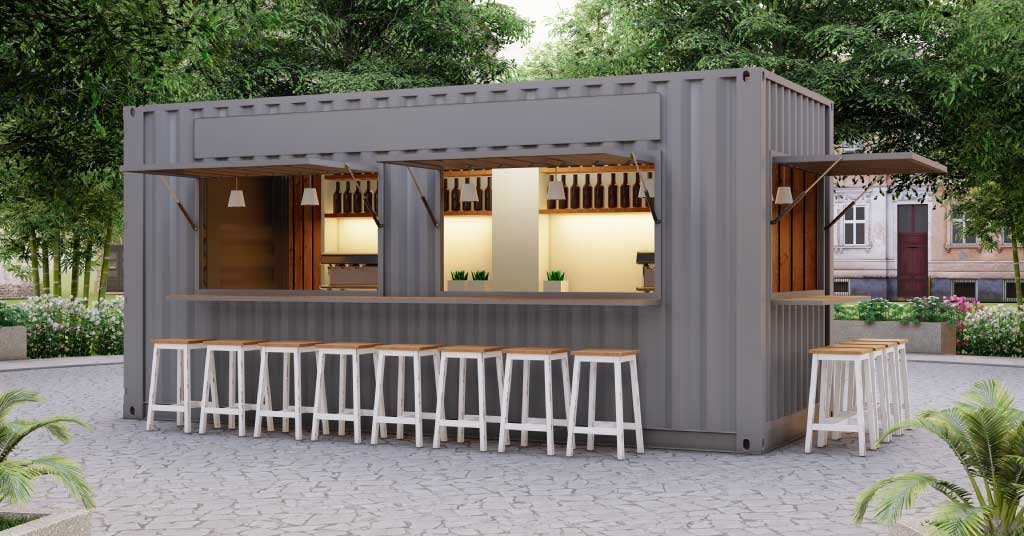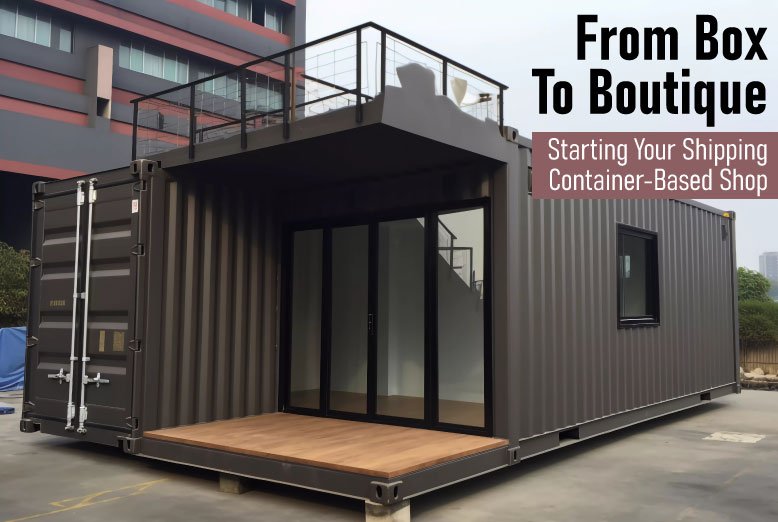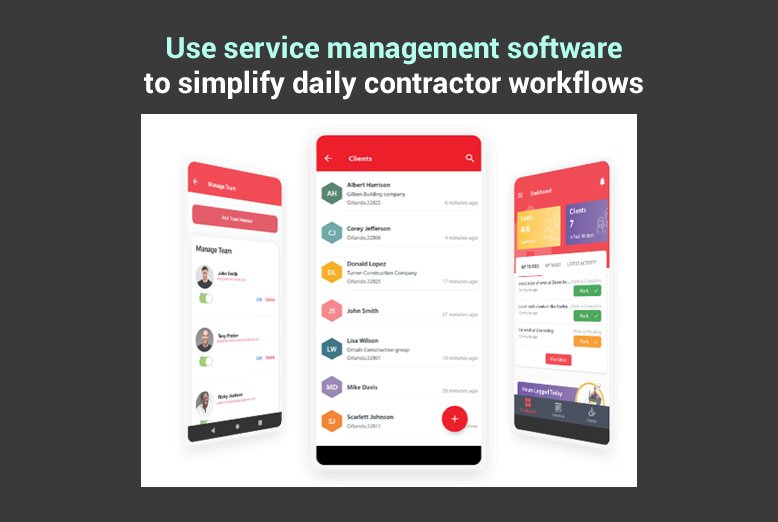In an era where sustainable and innovative business models are highly sought-after, converting shipping containers into boutique shops has emerged as a creative and cost-effective solution. This approach repurposes these robust structures and offers a unique retail experience. Whether you’re an aspiring entrepreneur or a seasoned business owner, transforming a shipping container into a boutique is an exciting venture that blends style, sustainability, and practicality.
Understanding The Basics Of Container Conversion
Delving deeper into container conversion, one must appreciate the inherent qualities of shipping containers. These structures are more than just steel boxes; they’re engineered to withstand harsh marine environments, making them incredibly durable for land-based businesses. The choice between the standard 20-foot and the larger 40-foot container hinges on your shop’s spatial needs and the inventory you plan to display. For instance, a 20-foot container might suffice for a compact boutique or a specialty coffee shop. In contrast, a 40-foot container could better suit a larger apparel store or a spacious art gallery. This initial decision plays a pivotal role in dictating your boutique’s design and customer experience.
Choosing The Right Container
Selecting the appropriate container balances budget, condition, and suitability. Brand new containers offer a pristine starting point, though at a higher cost, and ensure fewer issues related to wear and tear. On the contrary, second-hand containers can be budget-friendly. However, they may require repairs or modifications to make them suitable for retail use. Inspecting used containers for structural integrity and signs of rust or damage is important. Reputable suppliers like Royal Wolf specialize in containers fit for commercial purposes, offering a range of options to suit different business needs. When choosing a container, consider the ease of modification and the potential for long-term maintenance.
Designing Your Container Shop
Designing your container shop is where your vision comes to life. This stage demands creativity and practicality in equal measure. Start with a clear layout plan, considering the customer journey from entry to checkout. Utilize the vertical space for shelving and consider fold-out features or modular furniture for flexibility. The exterior design should capture your attention and reflect your brand identity. Use colors, signage, and lighting to create an inviting exterior. For the interior, think about the ambiance and customer comfort. Good lighting, ventilation, and temperature control are key for a pleasant shopping experience. Regarding sustainability, explore options like recycled materials for fixtures and renewable energy sources.
Securing Permits And Complying With Regulations
Compliance with local laws and regulations is a crucial, albeit often complex, aspect of setting up a container-based shop. Research local zoning laws to ensure your boutique can legally operate in your chosen location. Building codes are another critical consideration, as they dictate the required structural modifications and safety features. Additionally, consider accessibility standards to ensure your shop welcomes all customers. Obtaining the necessary permits can be a time-consuming process. Still, it’s vital for avoiding legal complications and ensuring the safety of your customers and staff.
Incorporating Technology And Modern Features
Integrating technology into your container boutique can significantly enhance the customer experience in the digital age. Smart solutions like automated lighting systems, climate control, and high-tech security can improve the functionality and efficiency of your space. Implementing an electronic point-of-sale system and offering Wi-Fi can make the shopping experience more convenient for your customers. Consider how technology can be used in your marketing efforts, such as through digital displays or an interactive website that mirrors the physical shopping experience.
Marketing And Branding Strategies
A strong marketing and branding strategy is essential in differentiating your boutique in a competitive market. Develop a unique brand identity that resonates with your target audience and reflects the ethos of your business. Utilize social media platforms to build a community around your brand, showcasing your products and sharing the story behind your container shop. Collaborative events with other local businesses or artists can create buzz and draw in a wider audience. Embrace digital marketing techniques like SEO, email campaigns, and online advertising to broaden your reach and drive foot traffic to your boutique.
Managing Logistics And Operations

Effectively managing your container shop’s logistics and daily operations is key to its smooth running. Efficient inventory management is crucial, especially given the limited space. Develop a system for tracking stock levels, reordering products, and managing deliveries. Staffing your boutique with knowledgeable and friendly employees will enhance the customer experience. Implementing clear operational procedures and training staff accordingly will ensure that day-to-day activities run seamlessly.
Sustainability And Community Impact
Embracing sustainability in your business model can significantly impact both the environment and your brand perception. Repurposing a shipping container is inherently eco-friendly, but you can take further steps, such as using sustainable materials for fit-outs, installing energy-efficient lighting, and reducing waste. Engaging with the local community and participating in environmental initiatives can strengthen your brand’s reputation and contribute positively to societal change.
Adapting To Market Trends And Customer Feedback
The retail landscape is ever-changing, and staying agile is crucial for the success of your boutique. Regularly assess market trends, customer preferences, and feedback. This insight allows you to adapt your product range, services, and store design to meet evolving customer needs. Encourage feedback through in-store and online channels, and be responsive to what your customers are saying. Staying attuned to their preferences and industry trends will help ensure your container boutique remains relevant and successful.
Conclusion
Starting a shipping container-based shop is a journey that blends innovation with practicality. From selecting the right container to incorporating sustainable practices and staying adaptable, each step offers an opportunity to create a unique and thriving boutique. This venture stands out in the retail world and contributes positively to the environment and community. Embrace the challenge and watch your shipping container transform into a bustling boutique, bringing your entrepreneurial dreams to life.
ALSO READ: Top 12 E-commerce Companies that blew up all the charts of the Indian market















